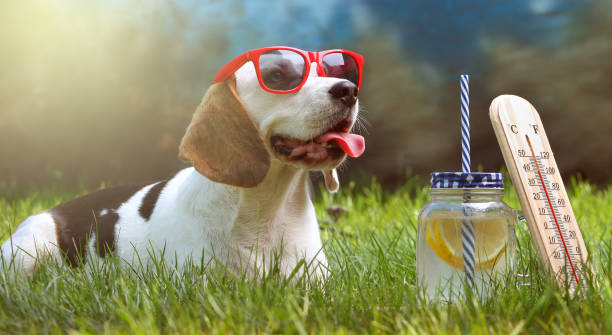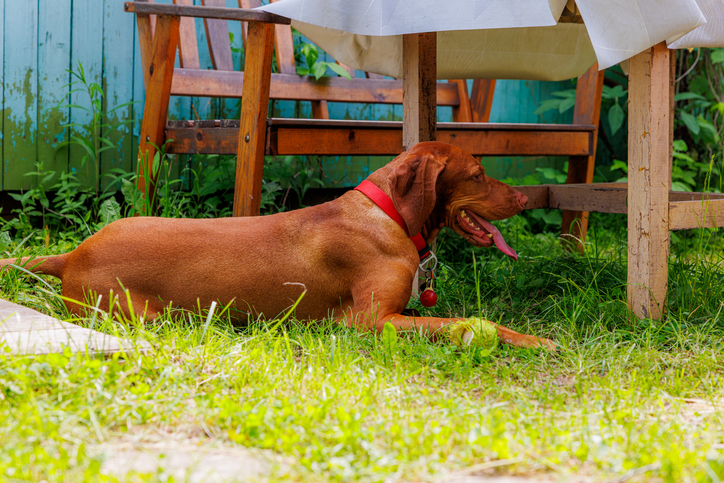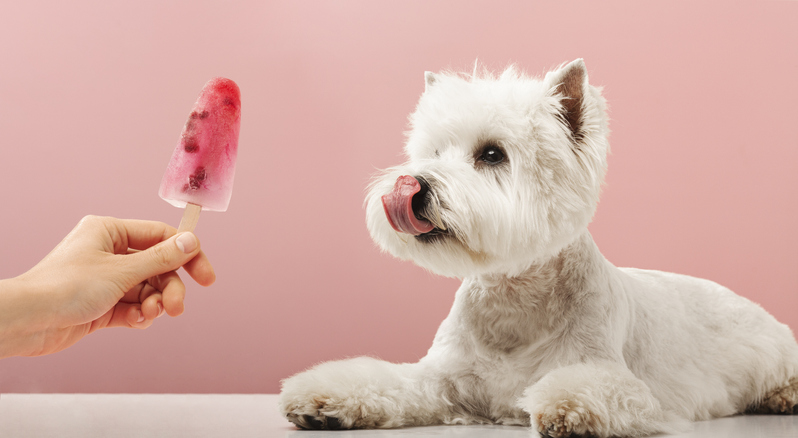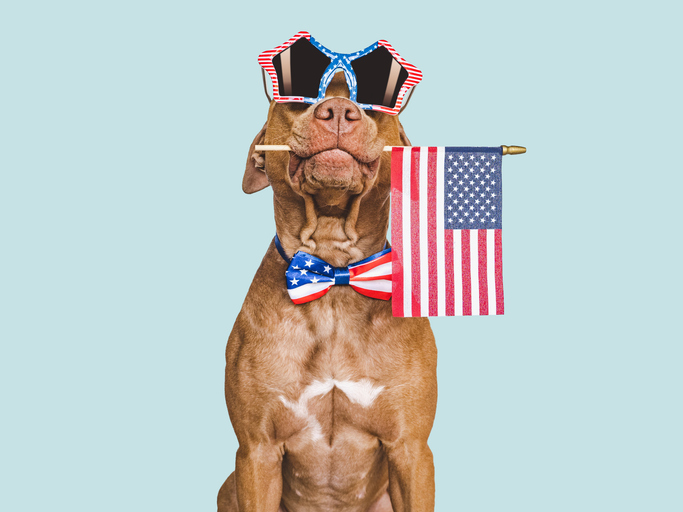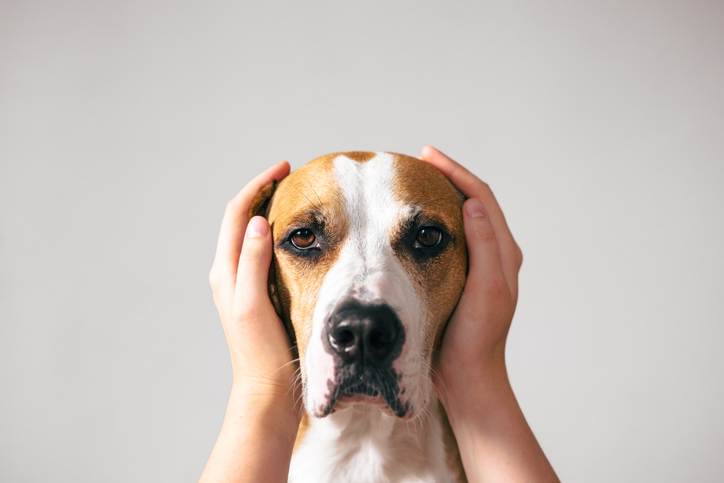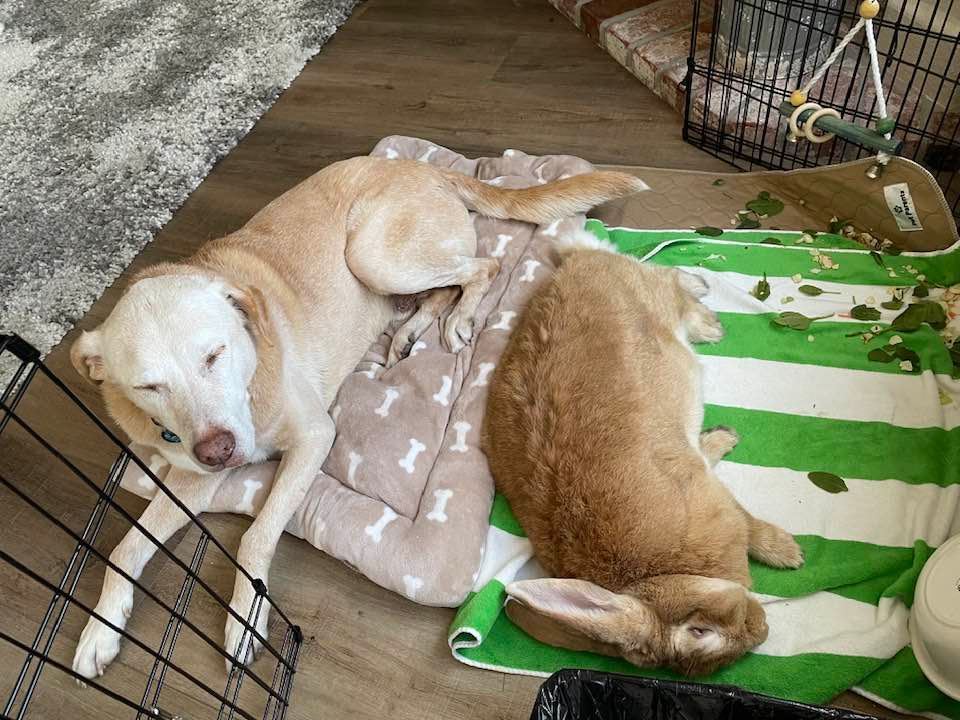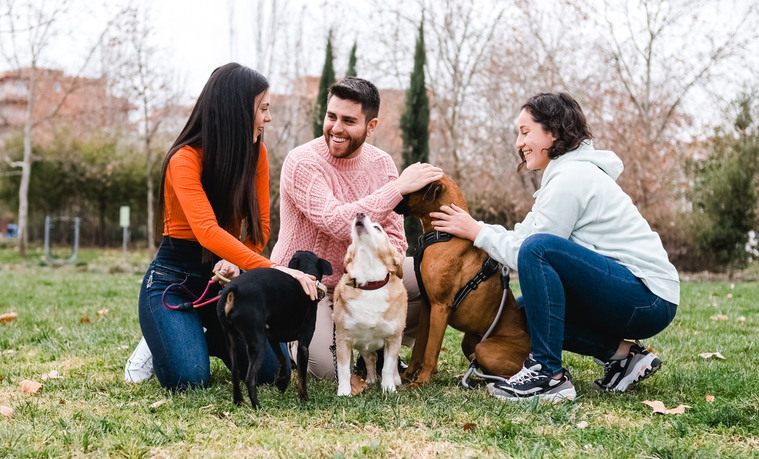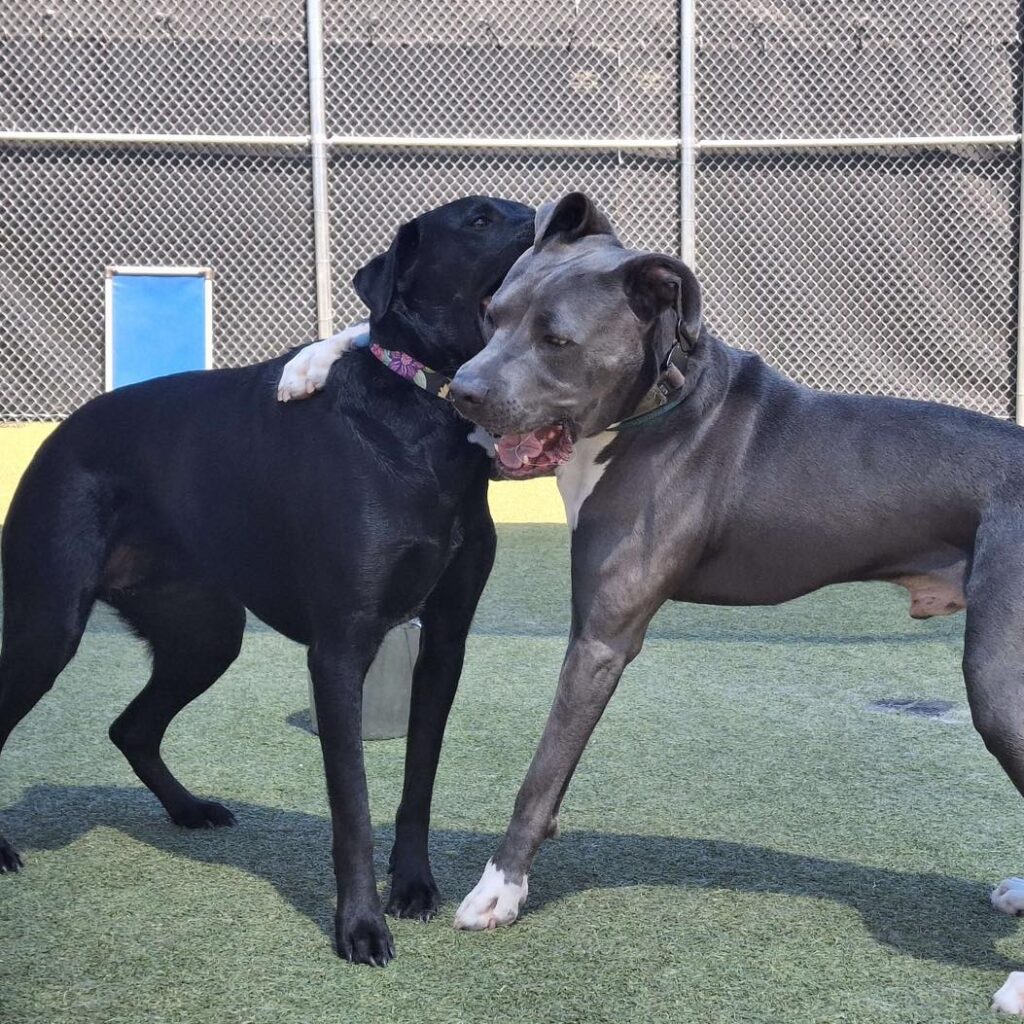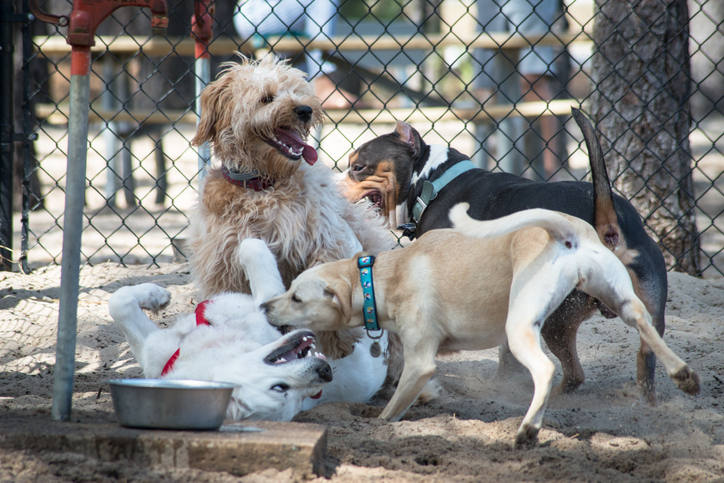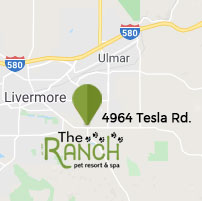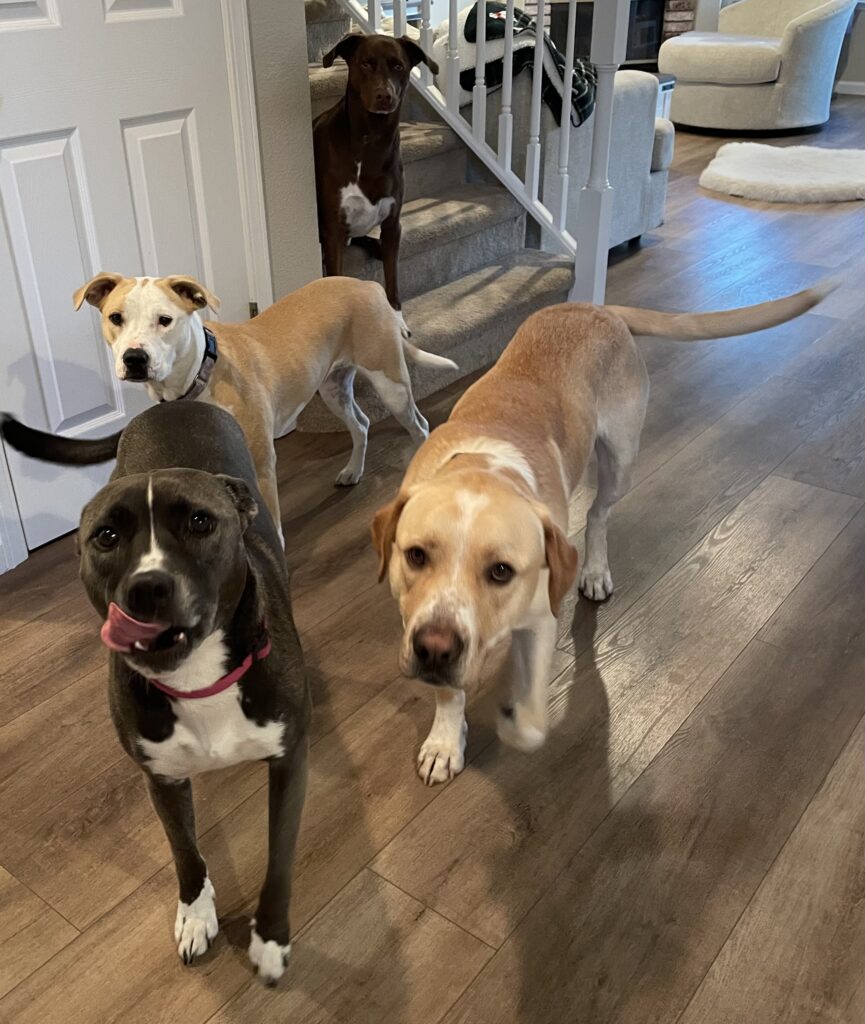
All of these dogs pictured above are mixed breeds rescued from local shelters.
Thinking about adding a furry friend to your family? Don’t overlook mixed-breed dogs — they’ve got a lot going for them! These lovable mutts provide all the joy and companionship that purebreds do, but also offer some distinct advantages.
From genetic diversity — which often translates to lower healthcare costs — to the joy of taking in a dog who might otherwise be overlooked, mixed breed dogs come without the astronomical fees associated with purebred dogs.
With today’s shelters overflowing with mixed breed dogs, adopting a ready-to-home dog may be the perfect choice for you and your family.
Here are five reasons to adopt a mixed-breed dog!
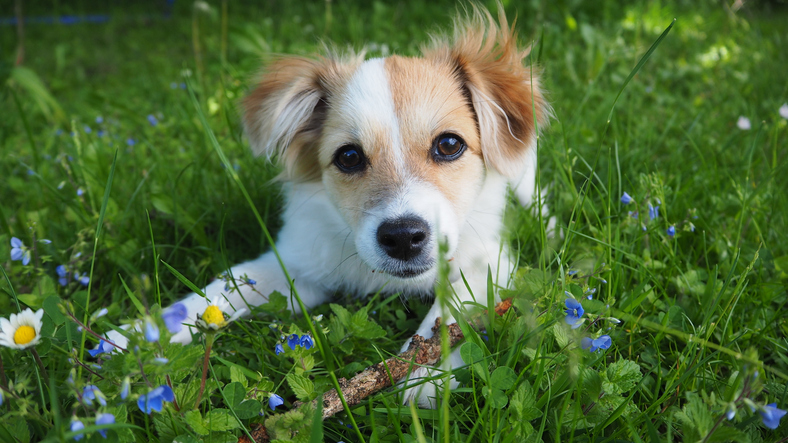
1. Lower Healthcare Costs
Mixed-breed dogs often benefit from what’s known as hybrid vigor, which means they’re less likely to inherit the genetic disorders common in certain purebred lines. Conditions such as hip dysplasia, respiratory issues, or heart disease are often linked to the overbreeding of purebreds.
With a mixed-breed dog, there’s typically a wider gene pool, resulting in a healthier immune system and a lower risk of inherited health problems. This can translate to fewer vet visits, lower medical bills, and a happier, more active pup — all of which add up to peace of mind and long-term savings.
2. Unique Looks
No two mixed breeds are alike — and that’s part of the charm! Whether it’s a dachshund-shaped body with golden retriever fur, or a spotted coat with pointy ears and soulful eyes, mixed-breed dogs are truly one-of-a-kind.
You won’t find their exact look anywhere else, making your dog completely unique and unforgettable. Their quirky combinations and unexpected features often spark conversations at the dog park, and they become known not just for their personality, but also for their signature style.
3. Sweet, Surprising Personalities
Mixed breeds are known for their well-balanced, lovable temperaments. Because they’re not bred for specific roles (like guarding or herding), their personalities tend to be a blend of affectionate, playful, loyal, and calm traits.
You might adopt a mixed-breed dog who loves couch cuddles and long hikes — the best of both worlds. And since many shelter dogs are older than puppies, you often get a clearer sense of their behavior and preferences upfront, so there are fewer surprises and more alignment with your lifestyle.
4. A Second Chance at Life
Shelters are filled with incredible mixed-breed dogs of all shapes, sizes, and personalities — no long applications or sky-high price tags required. And while it’s easy to get caught up in the popularity of certain purebreds, the truth is: mixed-breed dogs have just as much (if not more) to offer.
Many mixed-breed dogs end up in shelters through no fault of their own. This second chance can be life-changing for them — and for you. Rescued dogs often show incredible gratitude, and the bond that forms is deep and unshakable.
5. You’re Saving More Than One Life
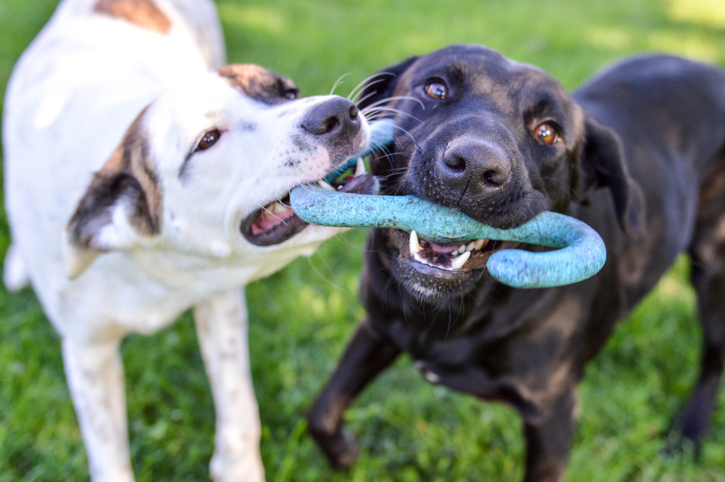
Adopting a dog doesn’t just impact the one you bring home — it also frees up space in the shelter, making room for the next animal in need. This creates a ripple effect: more animals get care, more families find pets, and more lives are saved. Plus, your adoption fee goes back into the shelter or rescue organization, helping provide food, medical treatment, and support for other dogs waiting for homes. In short, you become part of something bigger than yourself — a chain of compassion that keeps on giving.
The Bottom Line:
Mixed-breed dogs make incredible pets — loyal, lovable, and totally unique. If you’re ready to add a furry friend to your life, start at your local shelter. The perfect pup might be waiting for you right now.


